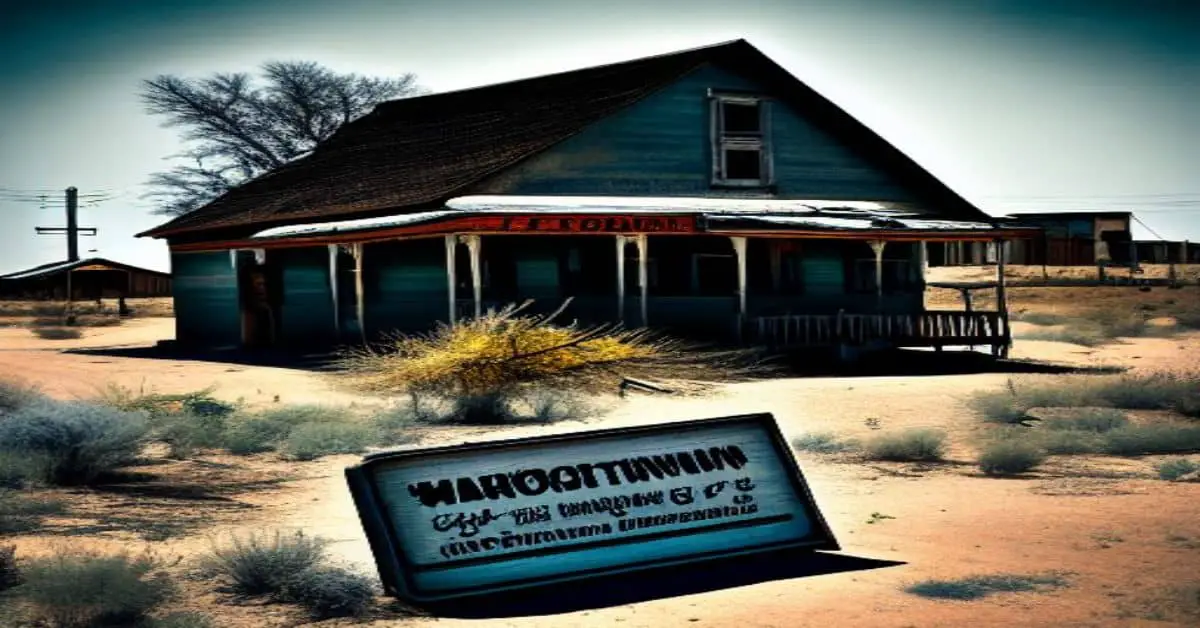Andersonville, SC
County: Anderson
Zip Code:
Latitude / Longitude: 34° 26′ 50 N, 82° 51′ 19 W
Elevation:
Time Zone: Eastern (EST) (UTC-5)
Established: 1801
Disestablished: 1893
Comments: Andersonville was a town in Anderson County, South Carolina, that was settled around 1800. It was named for Robert Anderson, who was a Revolutionary War veteran. Although it had been a thriving textile and trading community, it suffered from repeated floods and was bypassed by the railroad. The construction of Lake Hartwell displaced the remnants of the community. Today the nearest incorporated communities are Hartwell, Georgia, across the lake to the southwest, and Anderson, South Carolina, to the North.
Remains: The area was largely flooded in the construction of Lake Hartwell. Most of those buried at the cemetery were moved to Andersonville Baptist Church on the eastern shore of the lake. Andersonville Island, which is a narrow island about two miles long, is all that remains of the community.
Current Status: The town grew as a trading and textile center. The Southern Clock Company and textile mills were built in the town. In 1840, a flood struck the community and destroyed the textile mills. The textile mills were rebuilt, but they were destroyed by another flood in 1852.
Remarks: The town of Andersonville was settled at the fork of the Seneca River and the Tugaloo River. In 1801, the South Carolina General Assembly established the town. The town was named for Robert Anderson, who was one of the commissioners that laid out the community.
Dorchester, SC
County: Province of South Carolina
Zip Code:
Latitude / Longitude: 32° 56′ 53 N, 80° 10′ 11 W
Elevation:
Time Zone: Eastern (EST) (UTC-5)
Established: 1696
Disestablished: 1751
Comments: Dorchester was a town in the Province of South Carolina. Situated on the Ashley River about 18 miles (29 km) from Charleston, it was founded in February 1696 by the followers of Reverend Joseph Lord from Dorchester, Massachusetts, who gave it the same name as the town from which they had emigrated (which was in turn named after the English town Dorchester).
Remains: The ruins of the Old White Meeting House and its cemetery are owned and maintained by its successor congregation, Summerville Presbyterian Church.
Current Status: Dorchester was abandoned in 1751.
Remarks: The town was located near the mouths of Dorchester Creek and Eagle’s Creek (Named for Richard Eagle, who bought the land where a road crossed the creek around 1734), where they flowed into the Ashley. To the local Native Americans, this region, especially the land between the two mouths, was referred to as Boo-shoo-ee. It is unknown what exactly the name meant, although the -ee suffix probably referred to water, given that nearly all other names ending in -ee referred to a water feature.
Dunbarton, SC
County: Barnwell
Zip Code:
Latitude / Longitude: 33° 11′ 46 N, 81° 32′ 20 W
Elevation:
Time Zone: Eastern (EST) (UTC-5)
Established: 1910
Disestablished:
Comments: Dunbarton was a town in Barnwell County, South Carolina, United States. The area was originally settled circa 1800. Dunbarton grew after a train stop was built on a new rail line. In 1951, it was acquired by the U.S. Atomic Energy Commission as part of a site for the Savannah River Plant. The nearest incorporated community is the town of Snelling, to the northeast.
Remains: The settlement of the town began with the construction of the Atlantic Coast Line in 1899 from Denmark, South Carolina, to Robins, South Carolina. Robins was on the railroad from Port Royal to Augusta, Georgia. Robins was in the area taken for the Savannah River Plant. This line of the railroad was later rerouted to the south of Dunbarton. This line is now part of CSX Transportation. The old line east of Dunbarton is a spur that now services the Savannah River Site.
Current Status: The town of Dunbarton was incorporated in 1910. Dunbarton is named after the Dunbar family. It was an agricultural, trading, and sawmill town. By the early 1950s, Dunbarton had a population of about 300, about 35 residences, about 15 commercial buildings, one church, two schools including Dunbarton High School, two cotton gins, and the railroad station. Four Mile High School, an African-American high school, was located just outside the town of Dunbarton. It had dormitories so that some students could board during the week.
Remarks: An annual reunion of former Dunbarton residents started in 1953 and continued into at least the mid-1990s.
Ellenton, SC
County: Barnwell
Zip Code:
Latitude / Longitude: 33° 11′ 56 N, 81° 45′ 21 W
Elevation:
Time Zone: Eastern (EST) (UTC-5)
Established: 1880
Disestablished:
Comments: Ellenton was a town that was on the border between Barnwell and Aiken counties, South Carolina, United States. Settled circa 1870, it was the site in September 1876 of a violent attack against blacks over several days by white militia, resulting in the death of at least 35 blacks and likely as many as 100, part of efforts to intimidate blacks by violence prior to the fall elections to suppress their voting.
Remains: In 1950 the town was acquired by the U.S. Atomic Energy Commission as part of a site for the development of the Savannah River Plant, a nuclear plant. All the residences and businesses were acquired, and a new town, New Ellenton, was built. The plant was between the current CSX railroad and the current SC Highway 125, Upper Three Runs Creek, and Four Mile Branch. SC Highway 125 was U.S. Highway 278 in the 1950s.
Current Status: New Ellenton was developed to replace Ellenton. An annual reunion of former Ellenton residents started in 1973 and continues today.
Remarks: The town of Ellenton was incorporated in 1880. For most of its years, it was an agricultural, trading, and sawmill town. It declined through the downturn of cotton prices after World War I and the Depression of the 1930s. By the early 1950s, Ellenton had a population of about 760, about 190 residences, about 30 commercial buildings, five churches, two schools including Ellenton High School, one cotton gin, a city hall and jail, and the railroad station.
Ferguson, SC
County:
Zip Code:
Latitude / Longitude:
Elevation:
Time Zone: Eastern (EST) (UTC-5)
Established:
Disestablished:
Comments:
Remains:
Current Status:
Remarks:
Hamburg, SC
County: Aiken
Zip Code:
Latitude / Longitude: 33° 29′ 0 N, 81° 57′ 0 W
Elevation:
Time Zone: Eastern (EST) (UTC-5)
Established:
Disestablished:
Comments: The ghost town of Hamburg, South Carolina, was once a thriving upriver market located in Edgefield District (now Aiken County) of Piedmont. It was founded by Henry Shultz in 1821, across the Savannah River from Augusta, Georgia, in direct competition with that city (Cordle 1940:82). In its heyday, 60,000 bales of cotton worth $2,000,000 were brought by wagon to Hamburg each year (Chapman 1897:237). This cotton continued by pole boat or steamboat to the ports of Charleston or Savannah for subsequent shipment to manufacturers in New England or Europe. Hamburg lost business after Augusta completed its canal in 1848.
Remains: After the American Civil War, Hamburg was repopulated mostly by freedmen and was within newly organized Aiken County. It became notorious in July 1876 as the site of a massacre of blacks by whites in what was one of a number of violent incidents by Democratic paramilitary groups to suppress black voting in that year’s elections. The Democrats regained control of the state government and federal troops were withdrawn the next year from South Carolina and other states, ending the Reconstruction era.
Current Status: With the completion of the Augusta Canal (1848) and the general expansion of railroads in the 1850s, strenuous overland hauls to Hamburg became unnecessary and the famous wagon traffic declined (Chapman 1897:238). Hamburg became a ghost town by the time of the Civil War (Chapman 1897:20)
Remarks: During his American tour as ‘Guest of the Nation’, the Marquis de Lafayette visited Hamburg on March 24, 1825 (Cashin 1980:86). The town became the western terminus of the South Carolina Railroad. This was the world’s first railroad in the modern pattern. Providing scheduled steam service over 136 miles of line from Charleston to Hamburg, it was the world’s longest at its completion in 1833 (Derrick 1930:58-59). A railroad bridge was constructed over the Savannah River in 1854 but Hamburg was already in decline.
Hawthorne, SC
County:
Zip Code:
Latitude / Longitude:
Elevation:
Time Zone: Eastern (EST) (UTC-5)
Established:
Disestablished:
Comments:
Remains:
Current Status:
Remarks:
Leigh, SC
County:
Zip Code:
Latitude / Longitude:
Elevation:
Time Zone: Eastern (EST) (UTC-5)
Established:
Disestablished:
Comments:
Remains:
Current Status:
Remarks:
Meyers Mill, SC
County: Barnwell
Zip Code:
Latitude / Longitude: 33° 10′ 1 N, 81° 36′ 3 W
Elevation:
Time Zone: Eastern (EST) (UTC-5)
Established:
Disestablished:
Comments: Meyers Mill was an unincorporated community in southwestern Barnwell County, South Carolina, United States. The area was originally settled by the Meyer family in the late 19th century. Meyers Mill grew after a train stop was built on a new rail line. In 1951, it was acquired by the U.S. Atomic Energy Commission as part of a site for the Savannah River Plant.
Remains: The Meyers Mill community is named after the Meyer family. It was an agricultural community. In the early 1940s, a fire destroyed about half of the community. By the early 1950s, Meyers Mill had a population of about 50, about ten residences, three commercial buildings, one church, one cotton gin, and the railroad station. The people were largely African-Americans.
Current Status: An annual reunion of former Meyers Mill residents started in 1952, but it is no longer held. In addition, there have been reunions of Four Mile High School, which was the African-American high school east of Dunbarton.
Remarks: The settlement of the community grew with the construction of the Atlantic Coast Line around 1900 from Denmark, South Carolina, to Robins, South Carolina. Robins was on the railroad from Port Royal to Augusta, Georgia. Robins was also taken for the Savannah River Plant. This line is now part of CSX Transportation.
Mettzendorf, SC
County:
Zip Code:
Latitude / Longitude:
Elevation:
Time Zone: Eastern (EST) (UTC-5)
Established:
Disestablished:
Comments:
Remains:
Current Status:
Remarks:
Newell, SC
County:
Zip Code:
Latitude / Longitude:
Elevation:
Time Zone: Eastern (EST) (UTC-5)
Established:
Disestablished:
Comments:
Remains:
Current Status:
Remarks:

